
An artist’s website is a valuable piece of virtual real estate. When it’s done well, it mirrors the art that you create.
Today, there’s access to a wide range of free or affordable resources that craft a space for your talent to attract new clients, agency attention, and a broader fan following. However, just because a website is beautiful doesn’t make it discoverable. Using an artist website as a tool to promote your talents involves understanding what gets you the best reach.
We make it easy to get your work out to your network and beyond with all the marketing tools you need.
Lead with great visual design
The way your website looks should be intentional. Consider creating an aesthetically pure space where the art is the main attraction.
1. Make use of white space
Many successful galleries and museums all share a common trait — white walls. Viewers can engage with and experience art without distraction, a power you can bring to your site design.
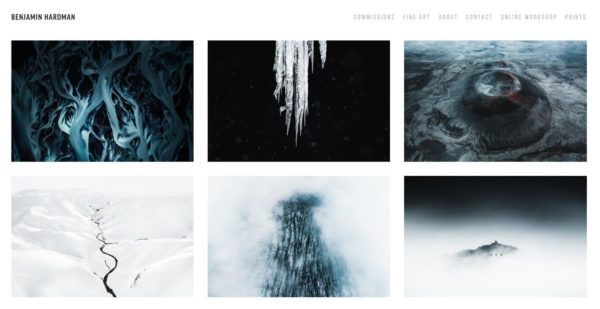
2. Stick to your aesthetic
Whatever you do, stay true to your personal style. If white doesn’t suit your brand, the key aim for your site’s design is curating an environment that makes your work pop.
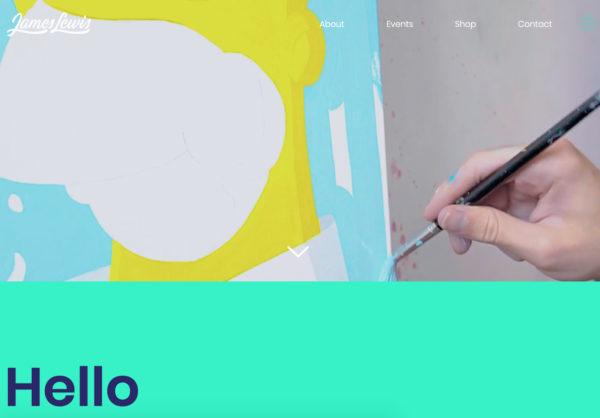
Build the user experience
The best artist website examples are accessible and easy to navigate. People can view your art and engage with you from anywhere — but only if you make it easy.
It’s all about creating a positive user experience. Collectors, talent agents, and fans alike want to see what you do, who you are, and how to engage with you.
3. Engage your audience
When it comes to capturing and holding their attention, a virtual audience is less forgiving than their in-person counterparts. Keep them engaged but don’t overstimulate them with a cluttered website.

4. Keep it simple
Easy-to-navigate websites are more appealing and strike a first impression that holds a user’s attention. People form this impression — and decide to keep browsing or to click away — in about 50 milliseconds.
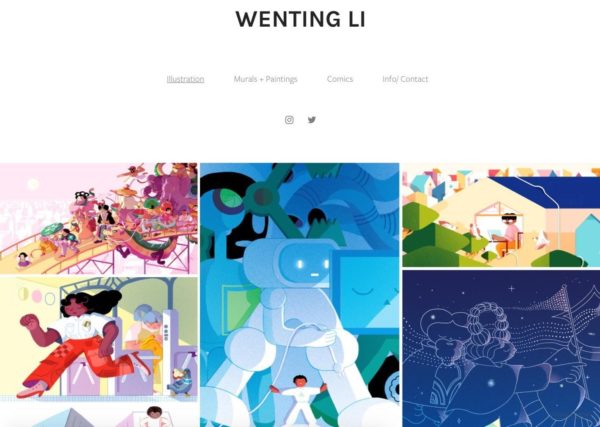
Maximize your virtual real estate while drawing in your audience with simple navigation through your portfolio, about page, and call to action.
5. Showcase your portfolio
Use your portfolio to highlight a cross-section of your technical skills and artistic voice. If you work with different mediums, subjects, or themes, make sure there’s a balance reflected in what you display.
A clean portfolio landing page brings your art to center stage, as Katie O’Sullivan does with her works.
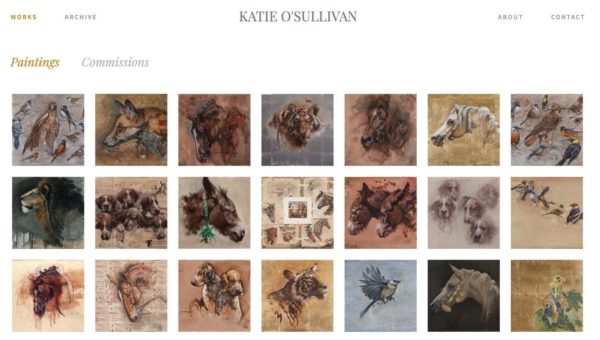
6. Create categories for easy browsing
Other pieces — and new or developing creations — have a place, as well. Divide your portfolio into smaller, topic-oriented categories to help your audience explore your collection.
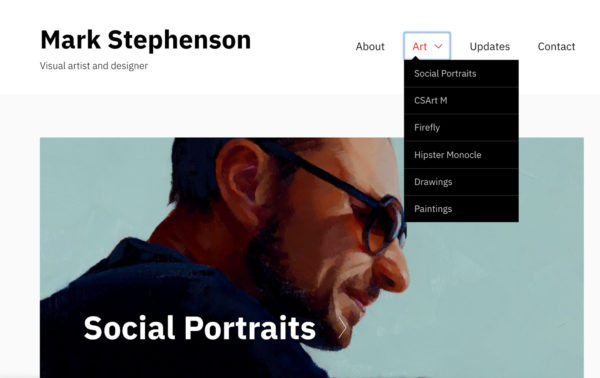
7. Update your website regularly
Search engines favor regularly updated websites, making yours more discoverable. New content better engages an active fan base, as well.
To improve the user experience and engagement even more:
- Use high-res, well-lit photos of your work
- Optimize your images’ size, resolution, and file type for quick loading
- Ensure your work is sharable on social media platforms like Instagram or Facebook
- Mobile-optimize your website for smart devices
- Include context to your imagery — titles, dimensions, mediums or tools, creation date, and sales price
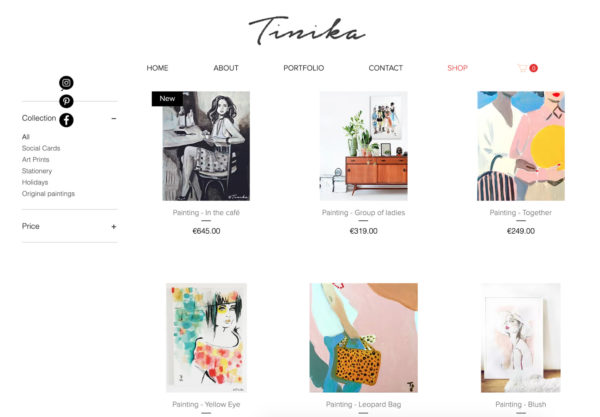
8. Introduce yourself
The internet is built around anonymity, but people’s behavior on it is all about the emotional connection.
Organizing your art in a simple, appealing way triggers this emotional response — but your story brings it all together. Excellent artist website examples often have “About Me” pages that rack up more page views than other site sections. A personal story lends credibility to you as an artist and ties in conceptual ideas from your work to a narrative format.
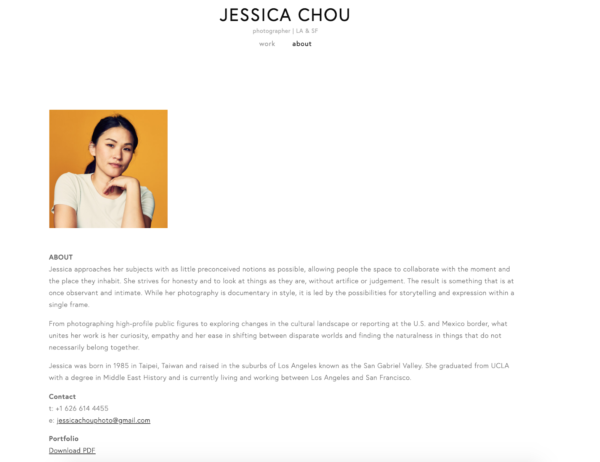
Your unique perspective, background, inspiration, and direction can all spark a connection between an individual and your work. You can inspire interest with your masterpieces — but ultimately, people buy from, support, and follow the person behind the talent.
Tell your story through sections like:
- Your educational background, mentors, and residencies
- Accolades and awards
- Past shows, interviews, or media attention
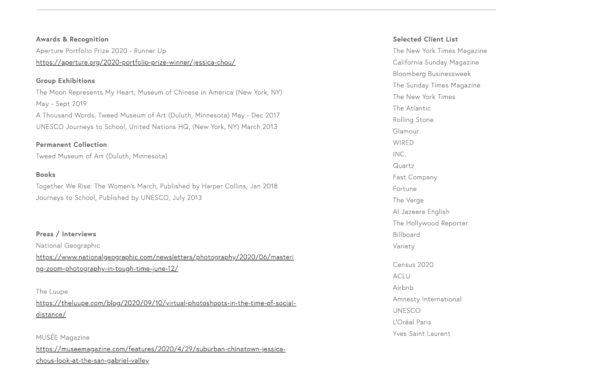
9. Always include a call to action
A fan-in-the-making peruses your portfolio and gets inspired by your story — now what?
Guide your online gallery attendees to their next move with clear calls to action.
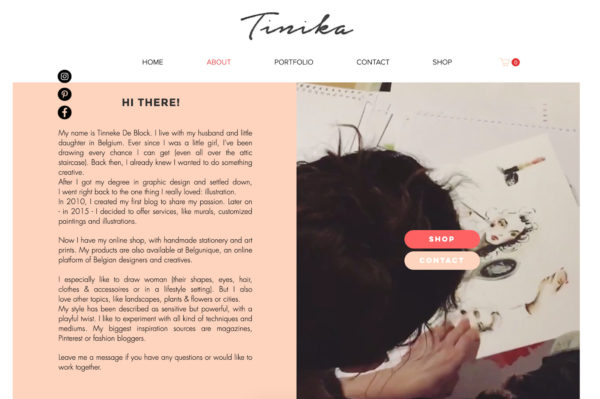
Depending on your business goals, this could mean prompting next steps like:
- Buying a print or original work
- Contacting you to chat about a commission
- Attending your next event or show
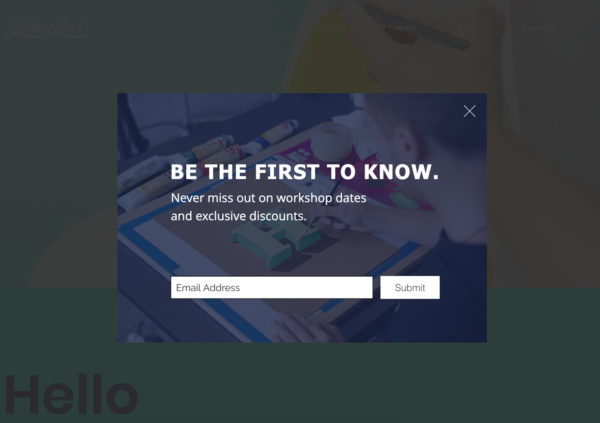
Improve your website’s reach
The best artist website examples help you gain exposure, land commissions, and sell or license your existing work. But even the most engaging and appealing portfolio will fall flat if no one finds it.
When building and maintaining your online presence as an artist, understanding some basic digital marketing techniques can help you reach the widest audience possible.
10. Start blogging
That personal connection you set with your “About Me” page can be reinforced by blogging. Blog posts continue your story, add context to your work, and invite viewers to follow your personal journey with individual pieces.
Blogs expand your visibility, as well, because:
- You have a space to use search terms and phrases, harnessing the reach of search engine optimization (SEO)
- New content helps your website rank higher in search results
- They’re content pieces you can share across social media platforms, speaking to wider audiences as people share your posts in their own networks
You can blog about your art, shows, life, and interests, like:
- Janice Tanton, with her reviews of famous artworks and how she stays inspired
- Melissa Dinwiddie and her short, quippy blog posts including studio snapshots, doodles, and creative musings
- Kristen Kieffer’s ceramics blog that digs into everything from her collaborations to the origin of different trends
11. Build an email list
Social media is a great tool to bring people to your website, but email offers a more effective connection when it comes to audience loyalty and sales.
When someone subscribes to receive your emails, they’re signaling interest in your personal brand. This opens up the avenue to have ongoing, customized conversations.
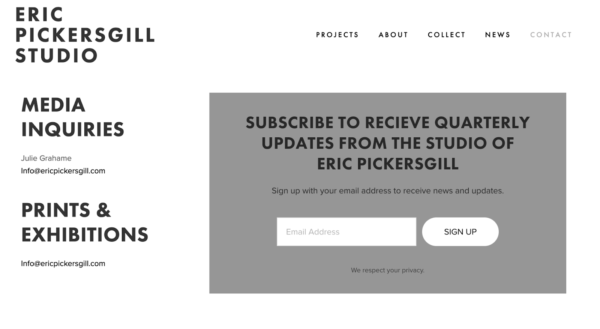
Invite website visitors to join your email list, and foster this connection through:
- Showing off your works in progress
- Promoting events and shows
- Expanding on the story behind a specific piece
Create and grow
Marketing yourself is critical to stay competitive today, but growing your exposure doesn’t have to compromise your studio time. Learn how to make promoting your digital gallery easy with Constant Contact’s free marketing guide, The Download — a comprehensive review of the best tools and techniques to help your personal brand gain better traction, audience engagement, and reach.




